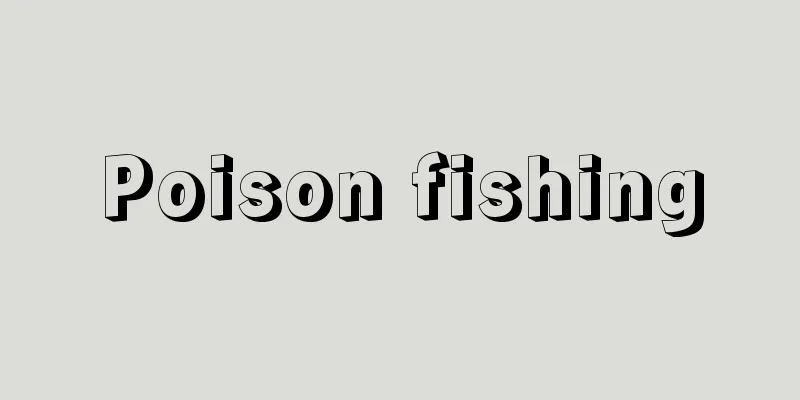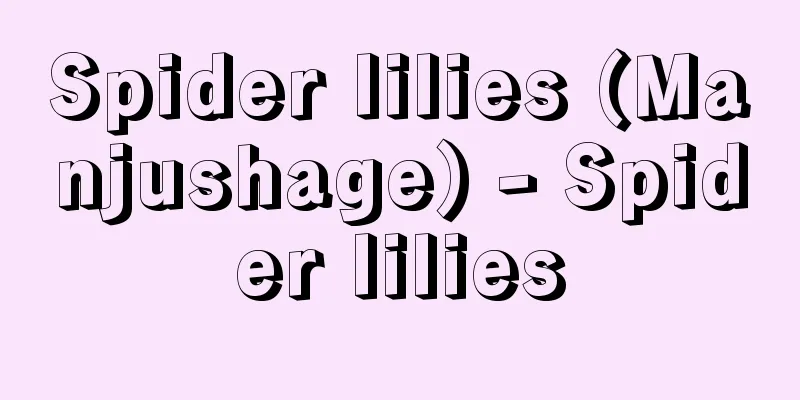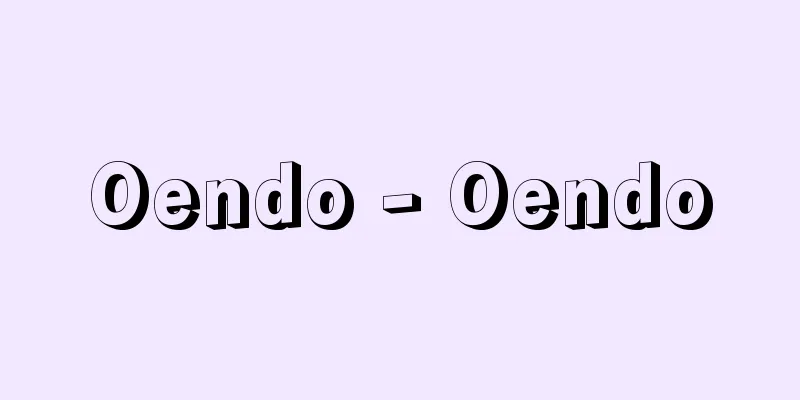Poison fishing

|
…Similarly, the reading of the character for fishing as sunadoru is said to have been derived from isonadaru (fish caught on the shore), but it really does refer to catching small fish on the shore, and can be said to be a gathering activity without using tools. Even today, the gathering of seaweed (nori-tsumi), or rockweed, which is done by women on rocky areas in winter from Sanin to Hokuriku, and the gathering of clams on shallow sandy beaches during the spring tide with families, are both remnants of this primitive form of fishing activity, and poison fishing, which uses poison from grass roots to catch small fish in tidal flats and puddles, can also be said to be an extension of this gathering culture. At this stage, when people start to use tools, they often initially repurpose tools used for other work on land for use near water. For example, the "fire-shaking fishing" practiced by the people of Kuzu (Yamato region) described in the Manyoshu is a fishing method that has been followed until recently in which the fish that gather around a light held in one hand are hit with the back of a hatchet. The "fish-cutting fishing" method, in which fish gather around a light held in one hand while wading waist-deep in shallow rocks in the Sulu Sea (southern Philippines), with a boro (mountain knife) in the right hand, is a fishing method that is an early stage in which such makeshift tools are used. *Some of the terminology that refers to "poison fishing" is listed below. Source | Heibonsha World Encyclopedia 2nd Edition | Information |
|
…同じく〈漁〉という字を〈すなどる〉と読むのは〈磯魚捕る(いそなどる)〉から転じたとされるが,まさに磯でそのような小魚を捕らえることであって,道具を使うことなく,採集行為をするものといってよい。現代でも,山陰から北陸にかけて女性が従事する冬の岩場での〈海苔(のり)つみ〉つまりイワノリ採取も,遠浅の砂浜海岸で春の大潮に家族づれでにぎわう〈潮干狩り〉もいわばこのような原初形態の漁労活動のなごりであるし,草根の毒を使って干潟や水たまりの小魚を捕らえる〈毒漁poison fishing〉も,このような採集文化の延長上にあるといってよい。この段階で,道具を使用しはじめる場合,これも最初は陸上の他の作業に使う道具をそのまま水辺に転用することが多く,たとえば《万葉集》の国栖(くず)(大和地方)人が行ったという〈火振り漁〉は,片手にかざした灯火に集まってくる川魚を,鉈(なた)の背でたたくという形で最近までそのまま踏襲された漁法であるし,スールー海(フィリピン南部)の浅い磯で腰まで浸りながら左手にかざしたカンテラの火に集まる魚を右手のボロ(山刀)で水面上からすばやく切りつける〈魚切り漁〉も,そのようなありあわせの道具を使用した初期的段階のものである。… ※「poison fishing」について言及している用語解説の一部を掲載しています。 出典|株式会社平凡社世界大百科事典 第2版について | 情報 |
>>: Poisson d'avril (English spelling)
Recommend
Nitrile - Nitoriru (English spelling) nitryl
A common name for a chemical substance. In inorga...
Kyusendo Cave
Southwestern Kumamoto Prefecture, Kuma Bear A lime...
Middle Atmosphere Program
Commonly known as MAP, this is an international co...
Permanent Neutrality Treaty
…Moreover, many treaties not only require that th...
Junker - English spelling Junker German
A colloquial name for the knightly land-owning ar...
Headlight - Tsumuri no Hikaru
1754-1796 A kyoka poet from the mid to late Edo p...
Haberschrack, M.
...The influence of the Bohemian International Go...
Tachibana Kozaburo
A right-wing agrarian thinker. Born in Ibaraki Pr...
Locustella
…General term for birds of the Locustella genus i...
McKim, A.
...The condition for a smuggling ship was that it...
Sata
〘Noun〙 ("Sha" means sand and "ta&qu...
Kasugayama Kiln
...However, even now that excavations have been c...
Orelkiak
…Example: In Aita‐k semea maite du.〈Father loves ...
Will-Erich Peuckert
1895‐1969 German folklorist. Born in Silesia, he f...
Heroic Age
In Homer's epics, heroes (Greek: hēros) play ...









